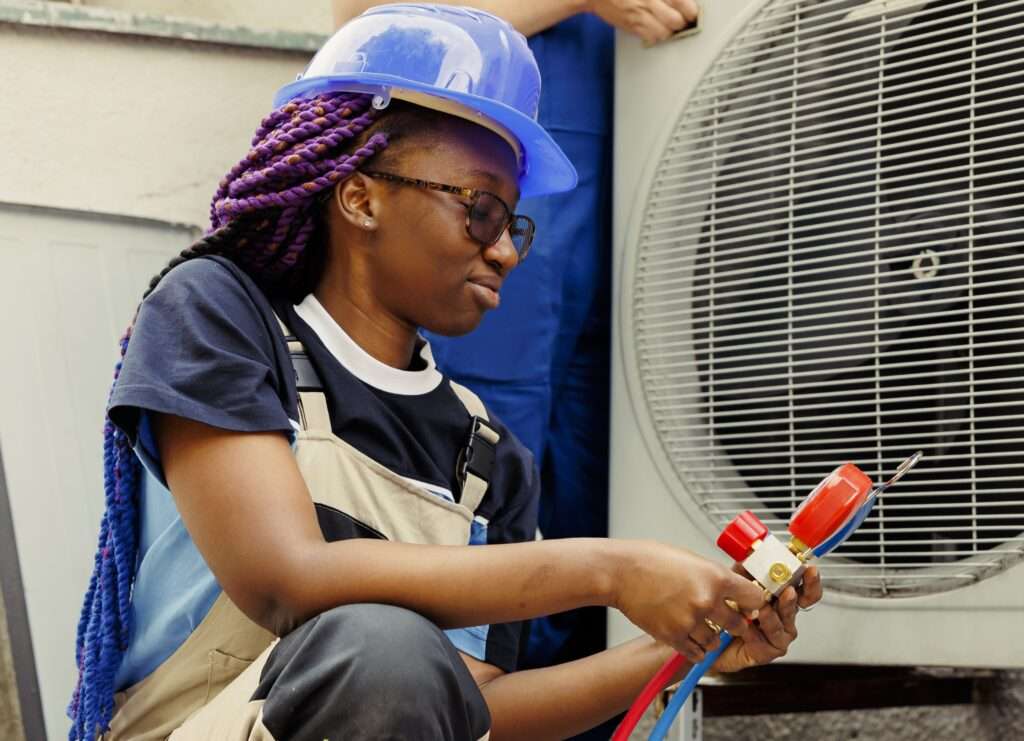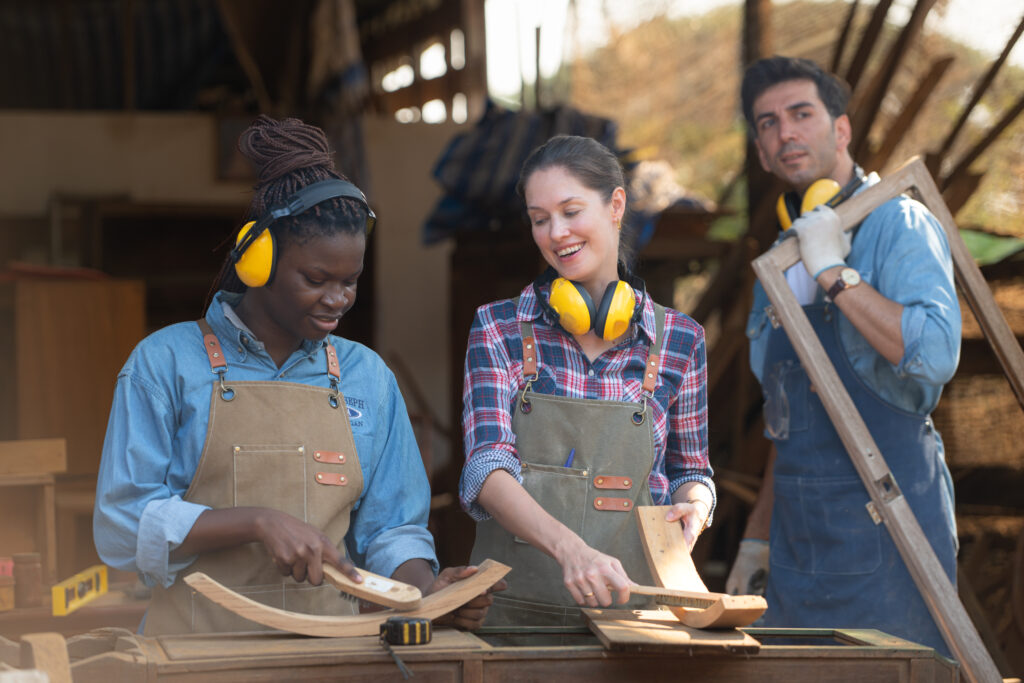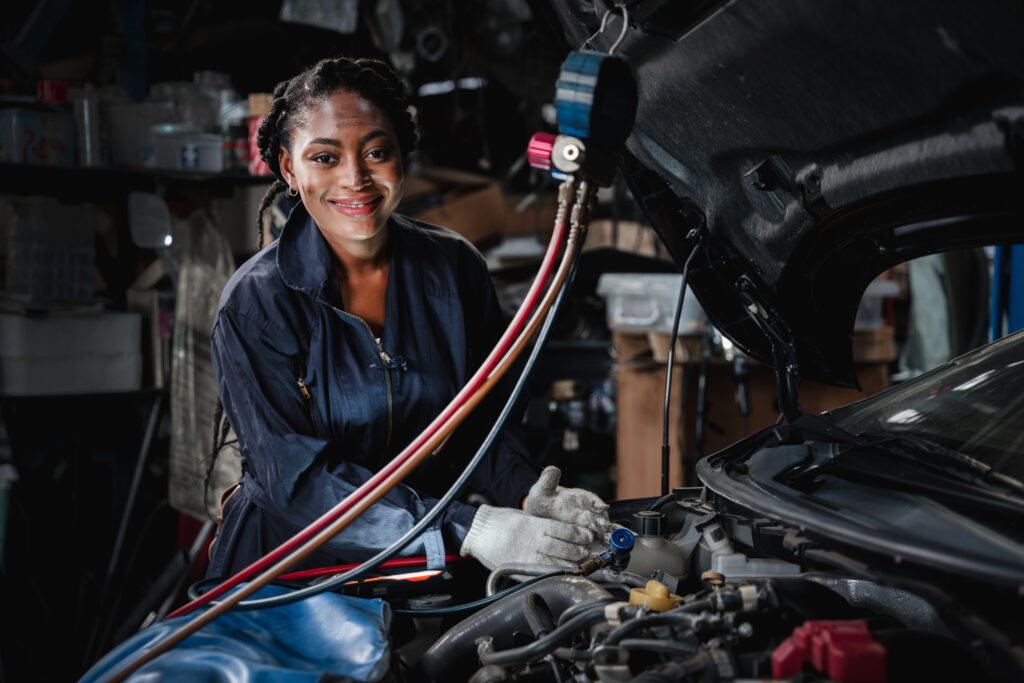Student Resources
For too long, trade careers have been stereotyped as “men’s work.” But that’s changing. Women across the country are picking up the tools, earning certifications, joining unions, and stepping into fulfilling careers in construction, electrical work, welding, plumbing, automotive tech, and beyond.
With strong demand, rising wages, and short training paths, the trades are one of the most accessible, rewarding, and empowering career paths available today—especially for women ready to break barriers and build the life they deserve.

Explore More Articles
The Future of Education: AI Skills Every Graduate Needs
AI Boom: Industries on the Rise vs. Industries in Decline
AI for Educators: Degrees That Train You to Teach AI
Degrees That Will Thrive in the AI Business Era
The AI-Resistant Creative Skills You Should Build Now
Explore Degree Subjects
Skilled trades offer immediate career opportunities without the financial strain of a four-year degree. Many trades require only a high school diploma plus a certificate or apprenticeship, which can be completed in under two years. Some programs are even tuition-free or paid, meaning you earn while you learn.
And the payoff is real. According to BLS.gov, Electricians, HVAC technicians, and welders can start at $40,000–$60,000 and grow into six-figure roles with experience. Many women find that a trade career provides more financial freedom, faster than office or service work.
Skilled trade workers are retiring faster than they’re being replaced. This shortage creates huge demand in industries like construction, infrastructure, clean energy, and home services. The U.S. Bureau of Labor Statistics projects hundreds of thousands of openings over the next decade, many with job security, benefits, and advancement opportunities.
Women are stepping in to fill that gap—and bringing fresh talent, leadership, and perspective.

Here are a few fast-growing trades where women are making their mark:

Training: Apprenticeship or trade school
Why it works: High demand, union benefits, steady advancement.
Median Salary: $60,000+/year

Training: Certification (6 months to 2 years)
Why it works: Artistic and technical options; careers in construction, art, or manufacturing.
Median Salary: $47,000+/year

Training: Apprenticeship or vocational school
Why it works: Always in demand, strong wages, room to specialize.
Median Salary: $49,000+/year

Training: Certificate or associate’s degree
Why it works: Climate control is essential—job security is high.
Median Salary: $50,000+/year

Training: Apprenticeship or vocational training
Why it works: Creative, hands-on, with room to lead or start your own business.
Median Salary: $48,000+/year

Training: Certification or associate’s degree
Why it works: Flexible work settings; potential for entrepreneurship.
Median Salary: $46,000+/year
Start by exploring which trades appeal to your interests. Do you enjoy fixing things, working outdoors, solving technical problems, or creating with your hands? Research the pay, schedule, and skill requirements for roles that catch your eye.
Options include:
Many programs offer daycare assistance, career placement, or financial aid, especially those focused on bringing more women into trades.
There are numerous resources for women in trades:
Start working in less than a year—with no student loans.
Learn abilities that help you at home and in life—like electrical safety, plumbing, mechanics, or woodworking.
From union jobs with benefits to freelance or contract work, many trade paths offer flexible hours and job independence.
As you grow your skills, you can become a crew leader, business owner, or mentor to others.
Trades industries are actively working to be more inclusive. Organizations, unions, and employers now recognize the importance of diverse teams and equitable environments.
Seeing other women succeed in trades proves what’s possible. Every woman who enters the field makes it easier for the next.
Whether you’re the first or the fiftieth on your team, your presence matters.
Women-led apprenticeships
Anti-harassment and inclusion training
Supportive networks like NAWIC and Tradeswomen Build Nations
Events and job fairs focused on women in skilled trades
Women are no longer waiting for permission to join the trades. They’re grabbing tools, learning skills, and stepping into powerful, essential roles across the country.
You don’t have to follow a traditional path to be successful. You can build your own—with a tool belt, a hard hat, and a mission. Skilled trades offer freedom, pride, purpose, and pay.
This is more than a career shift. It’s a movement.
It’s your turn to build something that lasts—starting with your future.

No! Many women enter the trades with no prior experience. Apprenticeships and beginner training programs are designed to teach you from the ground up.
Yes. Many states offer women-focused pre-apprenticeships and nonprofit-run programs that include mentorship, financial support, and career placement.
Maybe, but that’s changing. More women are entering trades every year, and you’ll find communities and networks ready to support you.
Absolutely. Most skilled trade jobs start above minimum wage and can grow to $70K–$100K+ with experience, especially in union or specialized roles.
Some roles are active, but you don’t need to be a bodybuilder. Smart techniques, safety tools, and teamwork help make the work manageable for everyone.